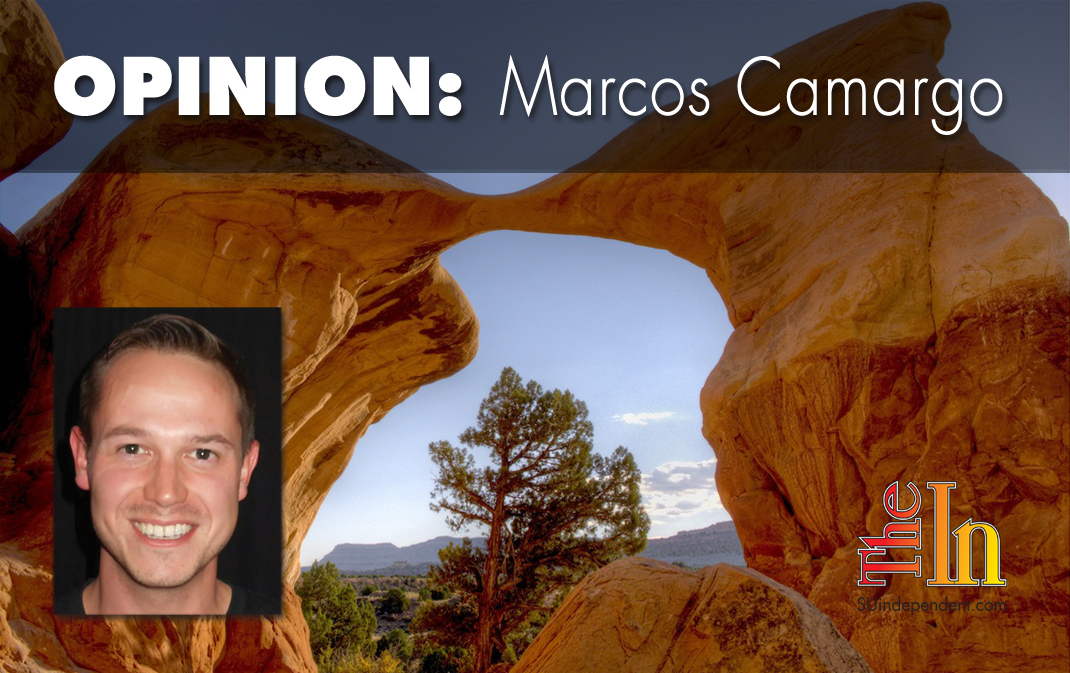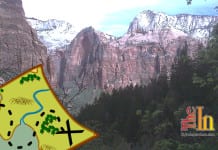
Utah lawmakers employ new tactic to wrest control of Escalante National Monument
Escalante National Monument has been a cactus spine in the boots of Utah’s local-control crowd since its designation as federally protected land in 1996. If the monument were human it’d be old enough to have a drink, which, I suspect, is what it would do if it knew how many hits local, state, and federal politicians have put on its life since its inception.
Among the monument’s most vocal critics are Utah senate majority leader Ralph Okerlund (R-Monroe) and Utah state representative Michael Noel (R-Kanab). Just last year both supported a resolution asking President Donald Trump to shrink the monument. The resolution passed, and last December Trump did issue a proclamation that reduced the monument by 47 percent.
Yet despite protests by citizens, ongoing legal battles, and calls by county and state officials to try to wrest control of the land from the Bureau of Land Management, the monument has endured. This year, however, state lawmakers who see the monument as a swine in the holy temple of local supremacy have taken a new approach. Their latest tactic comes in the form of a new legislative resolution titled “Concurrent Resolution in Support of the Creation of a New National Park.” Drafted by Sen. Okerlund and sponsored in the House by Rep. Noel, the resolution gives an official endorsement to a bill in the U.S. House of Representatives authored by Congressman Chris Stewart (R-UT), the “Grand Staircase Escalante Enhancement Act.”
The titles of both the Utah senate resolution and the U.S. congressional bill sound friendly, an olive branch of compromise that could end a two-decade feud between Utah and the BLM. “Support,” “national park,” “enhancement” — all these words sound like Utah is finally conceding to wilderness conservation and the long-sought goal of preserving one of the nation’s most remote landscapes in perpetuity for future generations.
On the surface both proposed pieces of legislation seem to show a balance between federal protection and local control. But one only need look a little deeper to find that Stewart’s bill is the legislative Trojan horse that the anti-federal crown has been seeking. The “Grand Staircase Escalante Enhancement Act,” if passed, would permanently keep in place Trump’s massive reduction of the monument and forbid expansion, even to its original size. The remaining land would be divided into three sections, one of which would be designated as a national park, albeit one where hunting and grazing are allowed.
The land removed from the monument under Trump’s proclamation would be expressly open to “entry, location, selection, sale or other disposition under the public land laws; disposition under all laws relating to mineral and geothermal leasing; and location, entry, and patent under the mining laws,” effectively giving Utah politicians their end goal — the ability to sell and lease the land for extraction of all its mineral resources. This would all be facilitated through another provision in the bill — almost complete local control over the monument and the new park. If enacted these areas would be managed by a committee with one representative from the BLM, five presidentially appointed state leaders, and one member at large. All members except the BLM representative could not be federally employed civil servants or elected officials. This combination of local control, a permanently reduced monument, and the ability to sell off the excluded lands would effectively end the hard-fought preservation effort that has been in place since the mid 1990s.
I’m no radical. I believe in the philosophy of multiple use in the commons of the arid west. The deserts and canyons of southern Utah have long been a place where people of all walks of life and with diverse interests have come to make the most of these remote lands. But it has only been in the last few decades that certain politicians have pushed an agenda proclaiming that such places would be best managed under a single-use policy where the land can be stripped for all its material value for the sake of short-term growth. Unsustainable economic expansion at any cost is not only shortsighted, it’s dangerous. As eco-writer Edward Abbey said it, “growth for growth’s sake is the ideology of the cancer cell.”
The viewpoints expressed above do not necessarily reflect those of The Independent.
Articles related to “Utah lawmakers employ new tactic to wrest control of Escalante National Monument”
Grand Staircase-Escalante National Monument may be in jeopardy
How to submit an article, guest opinion piece, or letter to the editor to The Independent
Do you have something to say? Want your voice to be heard by thousands of readers? Send The Independent your letter to the editor or guest opinion piece. All submissions will be considered for publication by our editorial staff. If your letter or editorial is accepted, it will run on suindependent.com, and we’ll promote it through all of our social media channels. We may even decide to include it in our monthly print edition. Just follow our simple submission guidelines and make your voice heard:
—Submissions should be between 300 and 1,500 words.
—Submissions must be sent to editor@infowest.com as a .doc, .docx, .txt, or .rtf file.
—The subject line of the email containing your submission should read “Letter to the editor.”
—Attach your name to both the email and the document file (we don’t run anonymous letters).
—If you have a photo or image you’d like us to use and it’s in .jpg format, at least 1200 X 754 pixels large, and your intellectual property (you own the copyright), feel free to attach it as well, though we reserve the right to choose a different image.
—If you are on Twitter and would like a shout-out when your piece or letter is published, include that in your correspondence and we’ll give you a mention at the time of publication.



